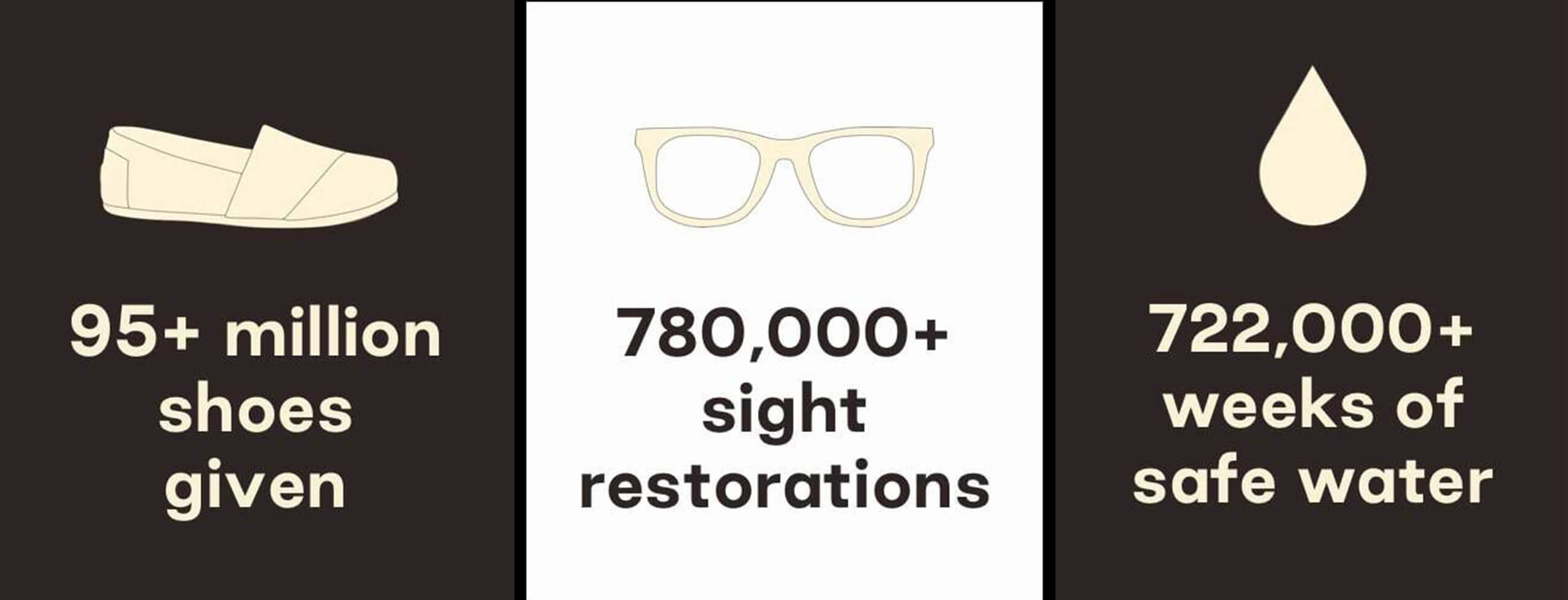February 7th, 2021
When pondering the notion of brand responsibility, there are some of us, specifically those born after 1990, that can’t help but recall a particular collective memory from the recent past. We picture ourselves as teenagers, standing in our local shoe shop with a pair of TOMS in hand. They are, as I’m sure we’d have all agreed, the obvious choice for three reasons. One, they are perfect for summer. Two, all of our friends have them. Three, if we buy them, TOMS will donate a pair to a child in poverty. At such a young age, the idea of giving a pair of shoes to someone in need is a faultless one. What possible flaws could there be to such a noble gesture?

It is only years later as adults, whether we are working, studying, or travelling the world, that we discover noble gestures, however pure in intent, are often much easier to execute in theory than in practice. It is difficult to pinpoint exactly when we stumble upon such moments of discovery. Do we find them in articles, hear about them in lectures, or even experience them first hand? One of these moments in particular, is when we learn that the Buy-One Give-One models that brands such as TOMS have pioneered in recent years, may actually reinforce charitable dependancy, rather than support economic prosperity. Adulthood has once again shattered another aspect of our once peaceful existence. It turns out that such a noble gesture can have a flaw or two after all.
People tend to have one of two reactions when discovering a brand they admire may no longer be the brand they fell in love with. The first, is the feeling of gullibility. You feel duped, almost conned, by the brand you had entrusted with your support. The second, is the feeling of denial. You try your best to pretend you never had a connection with the brand at all, to avert the potential that some of the blame may rest on your shoulders.
However, when that moment of clarity arrived, did you find yourself approached by either of these emotions? There are some that still harbour negative feelings towards TOMS, but for others the discovery was more thought-provoking than it was shocking. It is only after taking the time to fully understand people’s issues with the model, that the reality of the situation becomes somewhat clearer. We wish that the answer to being a responsible brand was as easy as putting a generous notion at the heart of what you do, but for responsibility to succeed in the long term, it first needs to learn to fail in the short term.

TOMS was founded in 2006 by American entrepreneur Blake Mycoskie. Mycoskie conceived the idea behind TOMS following an inspirational trip to Argentina, in which he helped volunteers donate shoes to children in poverty. Witnessing first-hand the dangers and health risks associated with inadequate foot protection, he returned to the states with aim of creating an affordable shoe brand with the Buy-One Give-One charitable model sitting at the heart of the brand’s mission. Thanks in part to an article ran by the Los Angeles Times, TOMS quickly became a commercial success, going on to sell, and donate, ten- thousand shoes in their first year of trading. In 2007, TOMS launched ‘One Day Without Shoes’, an annual awareness campaign in which participants go shoeless for a day in order to gain support for those in need. Later that year, TOMS won the prestigious People’s Design Award from the Cooper-Hewitt National Design Museum in New York. The feel-good energy of TOMS was instantly contagious, inspiring many up-and-coming brands to adopt similar charitable models. However, as the number of companies adopting the Buy-One Give-One model increased, so too did the number of critics.

As much as we would love it to be a yes or no answer, the definition of what makes a brand responsible varies throughout time and place, evolving alongside public perception. For every single idea that changes the way an industry behaves, there are thousands that are quickly forgotten. This is not intended to be a skeptical thought, on the contrary, it is only through trying and failing that we arrive at a game changing idea.
Responsibility does not manifest itself as an answer, but as an attitude. To truly establish itself as responsible, a brand must first accept the fact that they can never be responsible enough. This is not a negative notion, nor is it a critique of the idea of brand responsibility. It is a reality in the sense that today’s definition of responsibility will not be the same as tomorrow’s. The notion of settling for a certain standard, means that you are aware that a higher standard can be attained. To truly be responsible, a brand must never settle. They can never be responsible enough.
Although TOMS’ original model of buying one to give one attracted heavy criticism, the way in which the company has accepted its failure, and adapted since, speaks volumes of its attitude toward brand responsibility. Since 2006, TOMS claim to have impacted around ninety-million lives in over eighty countries, and predicts to reach a hundred-million shoes donated by the end of 2020. They have now moved away from their original model in favour of supporting enterprise within regions to which they have donated in the past. Forty percent of TOMS’ supply chain has been moved to developing countries to assist in the creation of employment opportunities, and a third of their overall net profit now directly feeds into a giving fund designed to equip local specialists with the tools to tackle poverty and stimulate economic growth. TOMS not only listened to the criticism, but used it as a guide for their future endeavours.

Although they may have as many critics as they do supporters, the legacy of TOMS shoes will be an important one in the history of brand responsibility. Their belief in what a responsible brand should be has undoubtedly inspired a new generation of innovators. Many of whom were no doubt, at some point in time, standing in their local shoe shop with a pair of TOMS in hand, pondering the notion of brand responsibility. Though perhaps failing in the short term, TOMS have inspired others to succeed in the long term. Only when a brand accepts that they can never truly be responsible enough, are they worthy of the title of a responsible brand.
Written by George Harrild FRSA, Multidisciplinary Creative.
DISCLAIMER: We endeavour to always credit the correct original source of every image, however if you think a credit may be incorrect, please contact us at rb@hatchedlondon.com.




